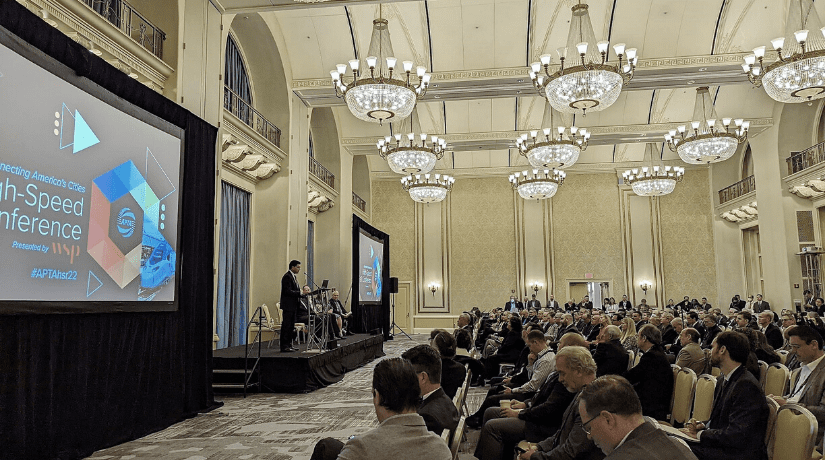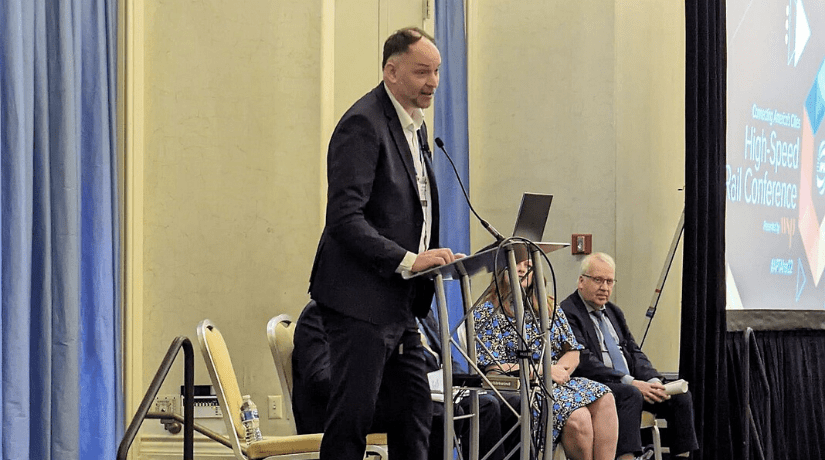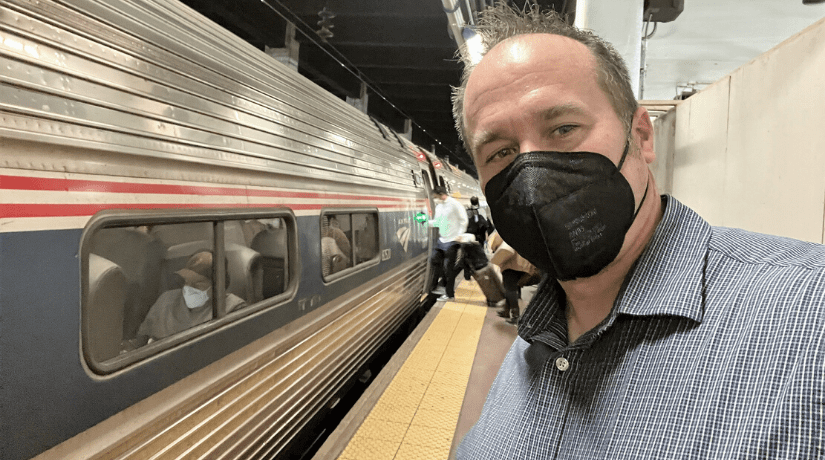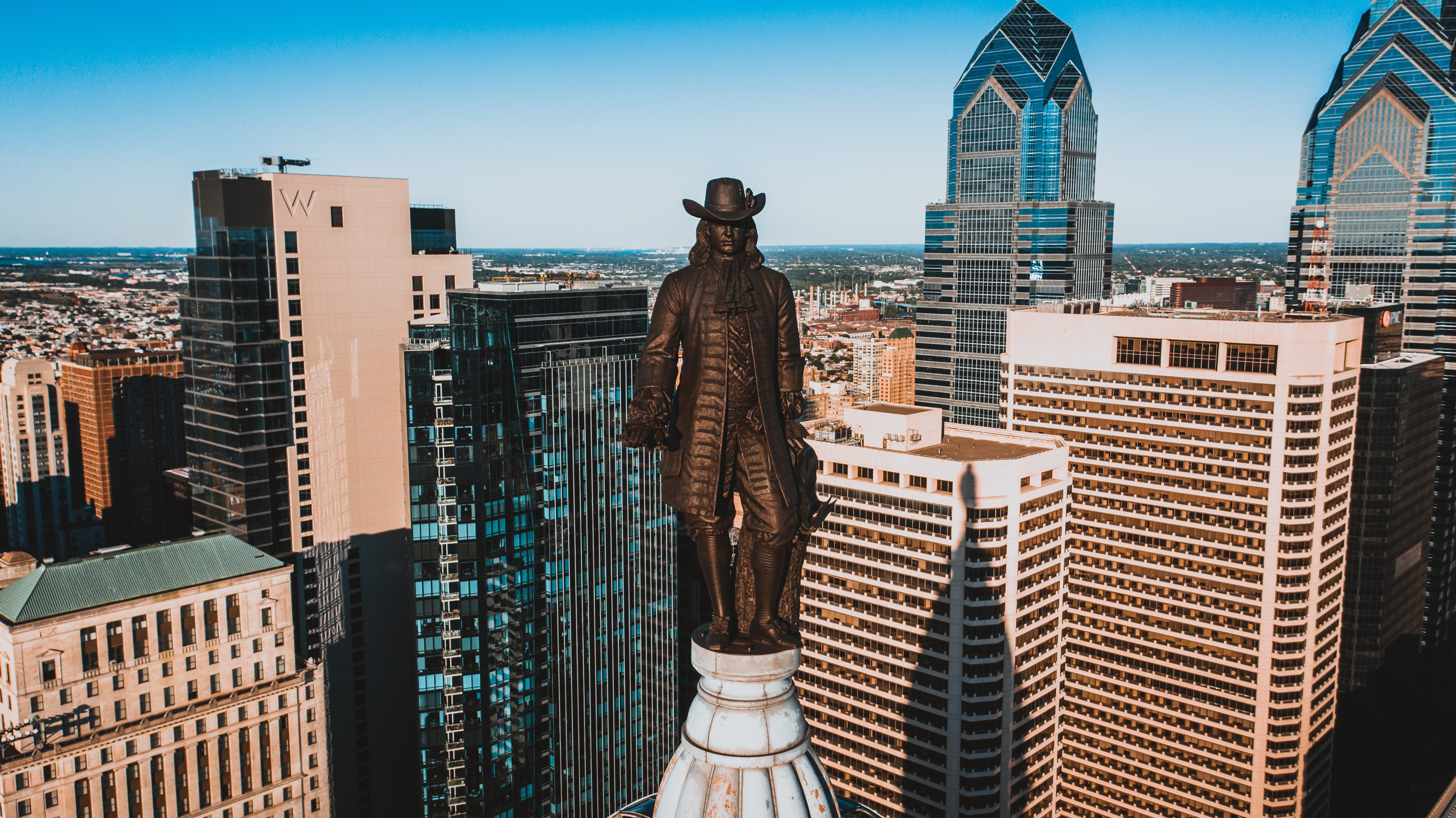A Visit with High-Speed and Intercity Passenger Rail Advocates in Philadelphia
With the passage of the Infrastructure Investment and Jobs Act, the coming years bring great opportunity to unleash the economic power of American megaregions, enable equitable and affordable mobility, and create permanent U.S. jobs. Those national benefits can be achieved by wisely using the rail funding in the Act to build a robust high-speed and intercity passenger rail network that is environmentally friendly, resilient, and sustainable.
Last week, more than 350 high-speed and intercity rail practitioners from across the U.S. and around the world gathered in Philadelphia over three days for the American Public Transportation Association’s High-Speed Rail Conference. The attendees discussed, debated, and shared best practices on how to use the unprecedented level of funding for passenger rail in the Act to turn a long-held vision of a robust and extensive rail network into a reality.

The conference speakers presented their visions for new high-speed intercity passenger rail services and the wide range of economic and environmental benefits that a robust network will bring to the United States.
There are thousands of miles of existing track in the United States that could support further passenger rail services. Some require infrastructure investment to deliver viable journey times that compete with driving, some are ready today but require commercial agreements with the Class 1 owners of the track to proceed, and others require new track built alongside existing track to provide the capacity to support both passenger and freight rail operations.
The clearest theme that came through in every presentation and panel discussion was that while the investment requirements and methods will vary depending on the corridor and the project, “the time is now for passenger rail in the United States.”
Speakers discussed the ways in which passenger rail transportation is environmentally friendly and sustainable, reducing emissions and congestion by giving people an appealing alternative to driving on many “too short to fly, too long to drive comfortably” journeys.
Speakers presented the economic cases for rail investment, showing how new passenger rail corridors boost the economies of the major cities they serve as well as areas in between, providing greater access to jobs and educational opportunities that may otherwise require long, unproductive car commutes.
And importantly, presentations were given, and panel discussions were held on funding mechanisms, overcoming legislative hurdles, stakeholder engagement, project management, public/private partnerships, and the practicalities of “HOW” to turn the vision into reality.
Stephen Gardner, President and CEO of Amtrak, opened Day 2 with “Visions of High-Speed & Intercity Passenger Rail” from the HS&IPR Committee’s vision statement for a high-performance national intercity passenger rail system. The vision statement serves as a guidance document for legislators and policy leaders in crafting a national intercity passenger rail plan.
Gardner remarked: “Amtrak is making investments across the network to modernize, improve assets and expand the territory. In the Northeast Corridor, Amtrak is making incremental improvements to 160 miles an hour. Trip time is what matters, so frequency and schedule are the fundamental coin of the realm that makes this service relevant. We have been traversing communities as opposed to serving communities. And if we do, this nation will be better for it and our industry will grow. Over the next three years, Amtrak is investing, growing the team, and creating the kind of capabilities to great things by partnering with all the industry stakeholders and advocates.”

As members of the U.S. High Speed Rail (USHSR) Association, one of the industry’s most progressive associations, we are working to bring world-class high-speed rail to cities and regions across America. Alongside the USHSR Association and the growing community of partners, we hope to help build widespread public, business, and industry support for major investment in fast, frequent, and affordable trains.
Through Icomera’s global footprint, we have witnessed the benefit of high-speed rail in Europe working with clients such as Deutsche Bahn, Thalys, and Trenitalia. Serving intercity rail operators, such as Amtrak, VIA Rail and Brightline, we see a bright future for high-speed rail in North America.


